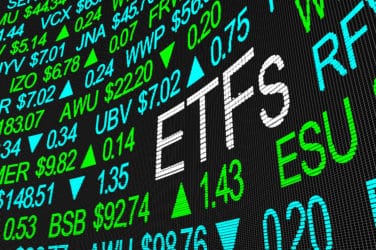
Equities-trading technology has democratized, enabling smaller brokers to offer a trading platform that can compete head-to-head with Wall Street’s biggest Bulge Bracket firms. Now that the right tools and technology exist, it’s how the sell side uses them that really matters.
The leveling of the playing field relating to execution technology as a differentiator has changed the competitive dynamic of the ‘low touch’ trading business, and by extension, the relationship between investment managers and the brokers who handle their trades. Essentially — and perhaps paradoxically in today’s high-speed electronic markets — the buy side is looking for excellence in some old-school attributes.

Joe Wald, Clearpool
“Everybody can be competitive with respect to execution services from a tools/platform perspective,” said Joe Wald, CEO and a Founder of trading-technology provider Clearpool Group. “But how do you catch up on service, collaboration and communication? That’s the real key in terms of restoring a sense of trust in the buy side – sell side relationship.”
The evolution of equities trading has shown that man + machine drives efficiency better than technology alone; that has pivoted the sales trader into the role of execution consultant. The redrawn landscape challenges securities brokers to find ways to stand out in a crowded field.
“The sell side must build differentiated products and services that are unique to each of their clients’ demands,” said Mehmet Kinak, Global Head of Systematic Trading and Market Structure at $1 trillion asset manager T. Rowe Price. “Larger long-only asset managers have diverse needs relative to other market participants. Understanding what is important to each type of market participant and tailoring products/services to different buy-side firms is essential for the sell side to stay relevant.”
Kinak noted the market-structure adage of ‘one size doesn’t fit all’ too often gets lost in the sell side’s dealings with the buy side, as everything from algorithms to smart order routers are designed to meet the needs of the lowest common denominator.

Mehmet Kinak, T. Rowe Price
“We therefore receive an inordinate amount of 100-share fills, are shown large-cap principal indication of only 15K shares, and unnecessarily navigate to over 50+ execution venues,” Kinak told Markets Media. “The importance of the sell side filtering out the noise and providing customized solutions has never been more important to help the buy side navigate through the complexity and fragmentation of today’s markets.”
By way of background, Clearpool’s Wald explained that technology was a strong differentiator 10 years ago, when the biggest Wall Street firms had the advantage and others had to play catch-up. Service, collaboration and communication never went away, but they were comparatively less important, and as a result firms underinvested in the tools to optimize them.
With a much narrower technological gap, Wald says that underinvestment trend has reversed, which sets the stage for a sell-side renaissance of sorts.
“The broker side of the business has been shrinking for years, but that is ready to stabilize and it’s ready to turn and grow,” Wald said. “The old guard is not going to drive the next generation of innovation, rather it will be these newly empowered players who for the first time have the tools they need to differentiate themselves.”
A sell-side broker can distinguish herself or himself by closely collaborating with a buy-side client on configuring trading strategies and analyzing trading venues; communication hums and trust is built with shared technology that enables the buy side to see what’s going on and is the antithesis of the old ‘black box’ business model.
Said Wald, “the evolutionary cycle that was kind of at a lull is moving to a new high.”






